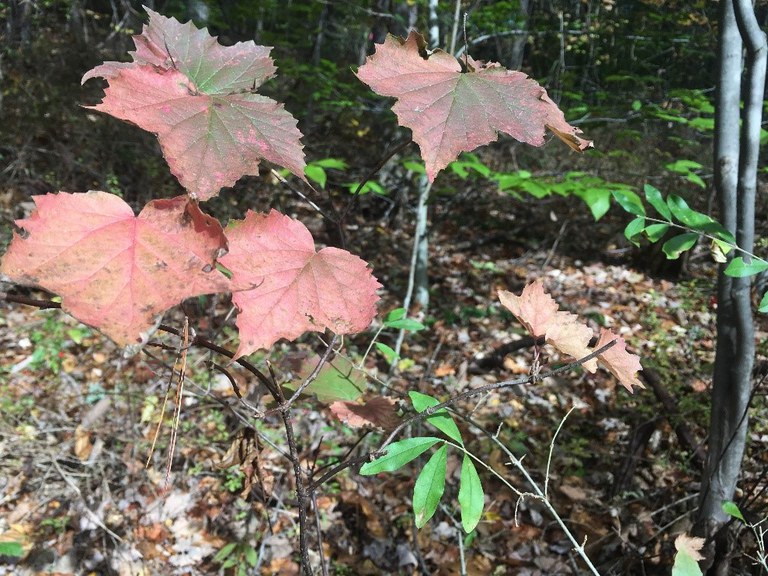Posted: March 14, 2018
Help researchers understand the impact of shading from invasive shrubs on native plants through citizen science!
Invasive shrubs are a growing concern in eastern deciduous forest of the U.S. If you keep a wary eye on non-native shrubs, you may have noticed that they are among the first species to leaf out in spring, and among the last green deciduous foliage in fall. This creates shade at novel times of the year in the understory, when native species are adapted for more open conditions. For example, spring ephemerals and tree regeneration are negatively impacted by these 'shady invaders.' Shade reduces light and temperature in the understory. Both are critical for the emergence and movement of species that don't generate their own internal heat, such as reptiles, amphibians and insects - including those that pollinate plants and feed birds. Light and temperature also impact soil processes such as seed germination, root activity and nutrient cycling.
As part of my dissertation, I'm quantifying some of these impacts of novel shade in central PA. However, the timing of leaves varies between years and across space, because the cues plants use also vary (e.g. light, temperature). So, the difference between invasive and native shrubs, and thus the amount of novel shade that I see, isn't the same as in another state or even just across Pennsylvania. As I began to doubt the broader relevance of my research, I veered away from an existential dilemma and toward a powerful solution: citizen science! I started a citizen science campaign called Shady Invaders. Using data collected from over 200 sites, I'm building models of leaf phenology (i.e. leaf timing) that allow me to estimate phenology across the eastern U.S. When this project is complete, we'll be able to understand whether the differences and impacts that I see in central PA are similar to, or more or less extreme than in South Carolina or central New York. It's not too late to participate in the final year of data collection!
How?
- Find a forested site near you that you will enjoy visiting at least once a week in spring and fall when things are changing fastest. The site should have at least one species of native shrub and one species of invasive shrub from the species list.
- Sign up for an account with Nature's Notebook. This is where you will enter your site and plant information, print prepared data sheets, and log your data. There's even an mobile app!
James C. Finley Center for Private Forests
Address
416 Forest Resources BuildingUniversity Park, PA 16802
- Email PrivateForests@psu.edu
- Office 814-863-0401
- Fax 814-865-6275
James C. Finley Center for Private Forests
Address
416 Forest Resources BuildingUniversity Park, PA 16802
- Email PrivateForests@psu.edu
- Office 814-863-0401
- Fax 814-865-6275


